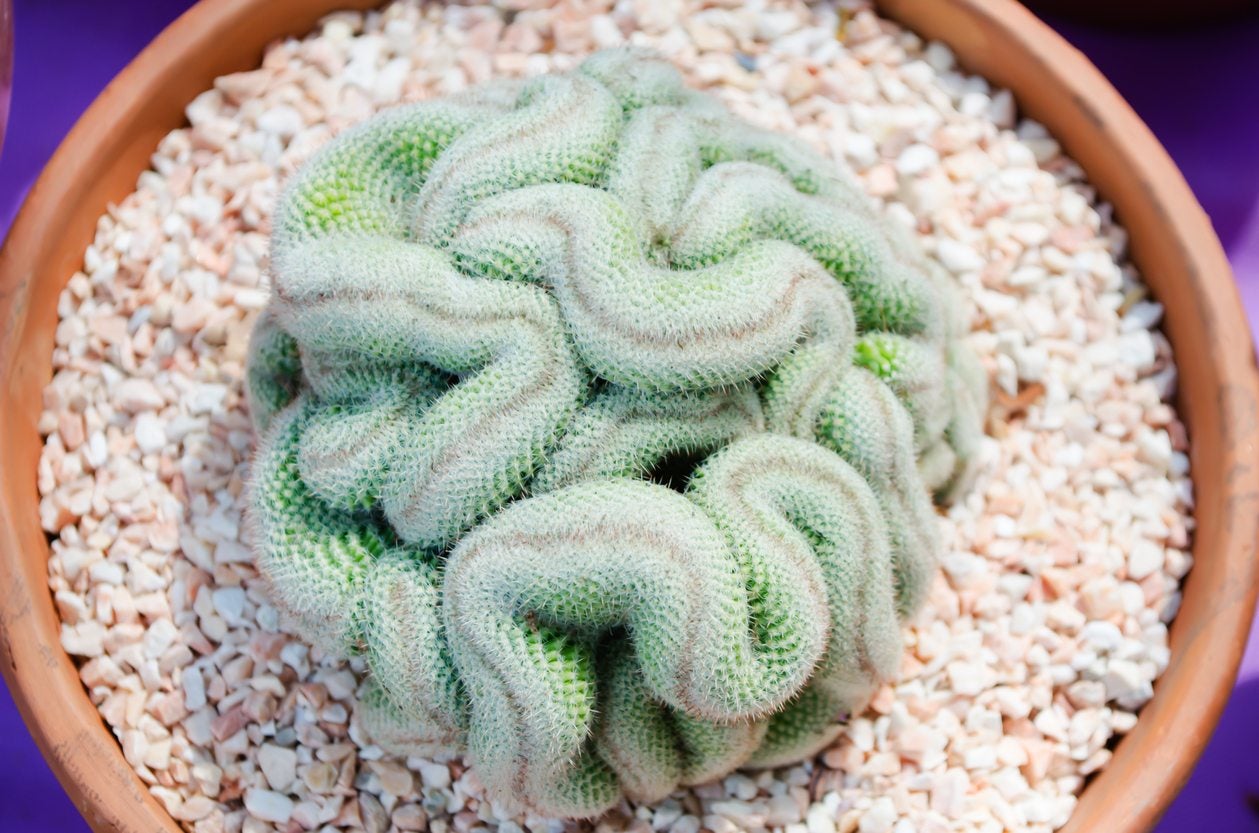What Is Brain Cactus: Cristata Information And Care


What's in a name? In the case of brain cactus, a fascinating plant, albeit with a very descriptive name. One of the many species of Mammillaria, Cristata is the form known as brain cactus. It is an easy-to-grow cactus that often produces lovely little blooms and makes a great houseplant or outdoor specimen in warmer climates. Read on for some Cristata information along with care and growing tips.
What is Brain Cactus?
Mammillaria elongata ‘Cristata’ is also colorfully named the brain cactus due to its convoluted and sinuous growth. One of the more bizarre pieces of Cristata information is how the shape occurs. The form is a result of damage to the plant when it is young. The cells at the injury site go crazy and multiply at a far faster rate than normal. This causes the twisted nature of the pads. Brain cactus is a common houseplant and in cultivation, this "damage" is manually manipulated to create the fan-like growth. The brain cactus is generally a small plant, only achieving 6 inches (15 cm.) in height. They are chubby little guys with waistband widths of 12 inches (31 cm.) across. In the wild of Central Mexico, they occur in rocky outcroppings and between crevasses. Over time, they develop into a column of stems and small offsets. The spines are in closely gathered areoles and consist of several sizes, with the finest spines almost hair-like. The plants are green, but the hairy spines give them a grayish cast.
How to Grow a Brain Cactus
These plants make fine indoor plants but can only thrive outside in USDA zones 10 and 11. Since they are small, try growing a brain cactus in a succulent dish with a mixture of forms and textures. You may expect blooms any time over the course of the summer which will brighten the container and add even more appeal. You may think you know all about succulent care, but you probably don't know how to grow a brain cactus. Most cactus are sensitive to overwatering and poor drainage, but brain cactus pads will actually trap moisture in the folds and crevasses. This can be bad in cultivation where gnats are attracted, and mold and mildew issues can instill rot and kill the plant. It is best to water from the base of the container to prevent any moisture from collecting on the body of the brain cactus. If you wish to propagate the plant, there are some easy methods. Use woody stem cuttings and allow the cut end to callus over for a week. Then insert the cut end into soilless potting medium, such as lightly moistened sand. The other way is to divide the pups away from the parent plant with a clean, sterile knife. Each should also be allowed to callus and then planted into cacti mixture. Growing a brain cactus from pups results in quicker establishment and faster blooms.
Cristata Brain Cactus Care
As a succulent from arid regions, brain cacti are most sensitive to moisture. They need to be kept in a dry place with little humidity. Excess humidity can do as much damage to the plant as too much water. Consider that the region from which they hail is dry most of the year and then characterized by a short drenching rainy season. The plants then do most of their growth and flower after the rain followed by a fairly slow growth rate, almost in hibernation, until the next rainy season. Place the container in a partially sunny location where the brightest noonday rays can't burn the plant. Allow the surface of the soil to dry to the touch before watering. In winter, water half the amount. In spring, feed with a dilution of cactus food.
Sign up for the Gardening Know How newsletter today and receive a free copy of our e-book "How to Grow Delicious Tomatoes".

Bonnie Grant is a professional landscaper with a Certification in Urban Gardening. She has been gardening and writing for 15 years. A former professional chef, she has a passion for edible landscaping.